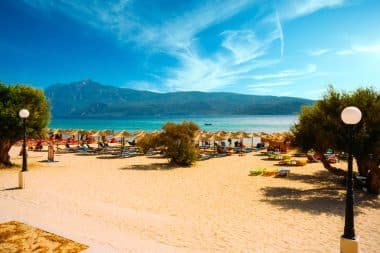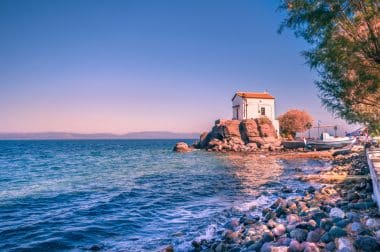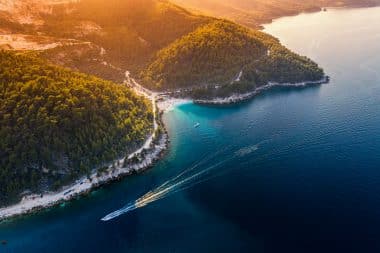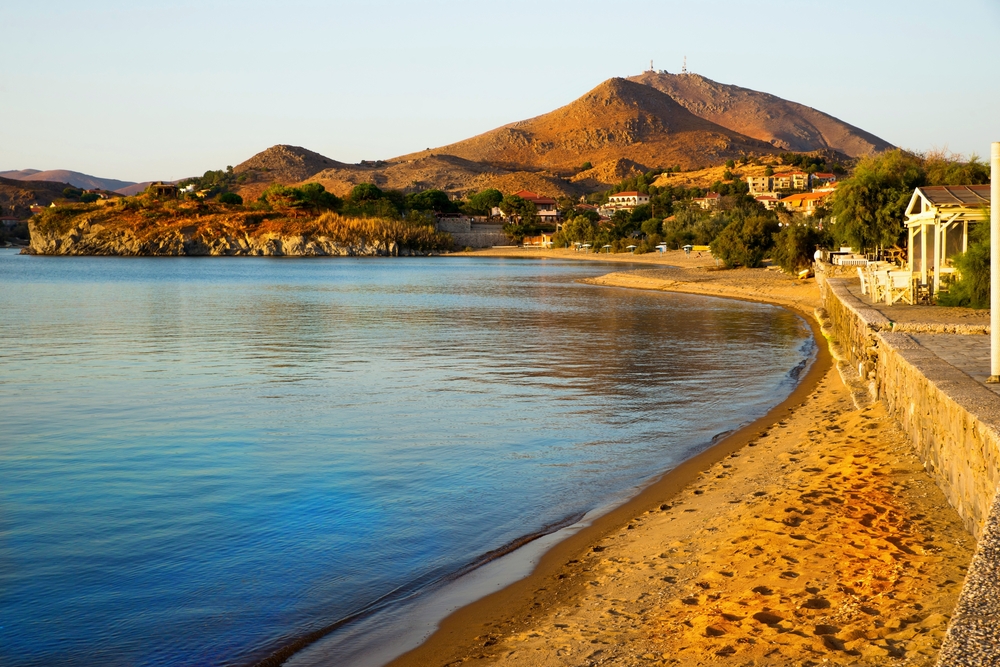The Aegean Sea, or the Aegean Sea, is part of the Mediterranean Sea. It is found east of Greece and west of Turkey. These two states are also the only riparian states. Usually, the sea is divided into the northern and southern Aegean Seas. Another possibility of subdivision is based on the different island groups. The North Aegean Islands, the East Aegean Islands and the Northern and Southern Sporades are worth mentioning here.
The North Aegean Islands
The North Aegean Islands is an auxiliary name for those islands that are located in the northern Aegean Sea. This means that they are located in the area of the Greek regions of Macedonia and Thrace and north of the Greek island of Lesbos . Occasionally, parts of the Northern Sporades as well as Lesbos and Samos (actually part of the East Aegean Islands) are also listed as part of the North Aegean Islands.
The main North Aegean islands include:
- Limnos, as well as the surrounding smaller islands
- Agios Efstratios, as well as the surrounding smaller islands
- Samothrace
- Ladoxera
- Thasos
- Amouliani, as well as other smaller islands off the coast of Halkidiki
- Xeronisi
- Lesvos
- Samos
The history of the North Aegean Islands

The islands were of great importance, especially because of their location, and were indispensable for seafaring as important intermediate stations. This is also reflected in the age of ancient Greece. The North Aegean islands became increasingly important. Separate city-states were founded and formed important trading posts. They also served as a safe harbor to ensure protection from the numerous pirates. Often these pirates were inhabitants of the surrounding islands or hostile tribes.
In Roman times, the islands increasingly lost importance. Subsequently, the islands fell under Byzantine rule. Later, they were part of the Venetian and Genoese empires. The Ottomans had also conquered parts of the North Aegean Islands. This numerous changes of rule are still reflected today in the diverse and mixed culture of the population.
The economic importance of the North Aegean islands
A large part of the population of the islands lives from tourism. In particular, the larger islands, which also have historically and archaeologically interesting excavation sites, have developed into very popular tourist destinations in recent decades. The high season is from May to August. During this time, the hotels are usually very well occupied, so reservations should be made in advance. In addition to the historical excursion destinations, some sandy beaches, for example on Thasos, are very popular destinations. But hiking and cycling tours can also be undertaken on the North Aegean islands.
The second important economic sector is agriculture. Here, the cultivation of trees dominates, especially olive trees. In addition, there are nut trees, figs and various fruit trees. Cereals and vegetables are grown very little, as the conditions here do not allow for productive harvests. The cultivation of wine was an important factor in ancient times, but is negligible today. Livestock farming is very limited on the North Aegean islands.
How to get to the North Aegean Islands
Only a few islands in the Aegean Sea have their own airport. Samos and Lesbos are particularly noteworthy here. Arriving via the mainland is often the easiest and fastest way. In particular, the airports in Thessaloniki, Kavala and Alexandroupolis are worth mentioning here. All North Aegean islands are easily accessible by ferry from a wide variety of places on the mainland. These usually run daily and are very inexpensive.
Tourist highlights of the Aegean Islands

Samos is also known as the green island of the Aegean Sea. The high mountains provide large amounts of precipitation. At the same time, Samos is considered one of the sunniest areas of Greece. So it’s no wonder that an incredible variety of plants thrives here. In this beautiful landscape, hiking trips are excellent. Archaeological remains can be found throughout the island, the highlight of which is the ancient city of Samos .
Lesvos is often overlooked as a tourist destination. The island has a diverse mix of modern capital, traditional fishing villages and tourist insider tips to offer. One of the latter is the village of Mólivos, whose houses nestle against a mountainside and offer a unique view over the island and the sea.
An insider tip is also the island of Limnos. It offers a breathtaking volcanic landscape, fascinating salt lakes, endless beaches with white sand dunes and excellent areas for surfers. But nature lovers also get their money’s worth here. Numerous migratory birds stop off on this island, making it a paradise for ornithologists.
Samothrace is known to many mainly thanks to the famous statue “The Nike of Samothrace”. The island is one of the most beautiful in the Aegean. Here you can take long hikes through mountainous landscapes as well as paragliding, kayaking and rafting or diving trips. A special highlight are the numerous rivers, their small waterfalls and the water basins underneath, which are also called Vathres.

Thassos is known as the emerald of the Aegean or the golden island. Here, beautiful beaches alternate with idyllic landscapes. Around the island there are always small picturesque villages and smaller towns. It is an island that is best explored by car, because there is so much to discover here.
Thanks to ferry connections between the individual islands and especially thanks to numerous tourist boats, it is easy to take a day trip to one of the other islands. Because they are all worth a trip. Beautiful beaches, small villages, ancient ruins and picturesque landscapes lure you everywhere. With a little planning, you can also do excellent island hopping here. Discover a new island every day – who hasn’t dreamed of it?


